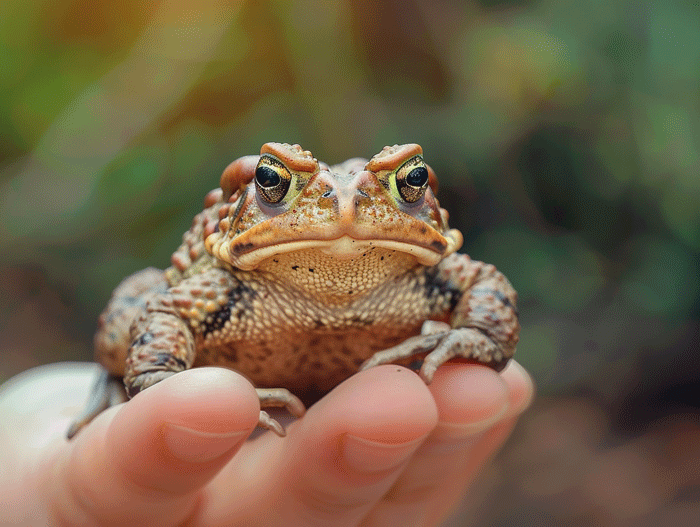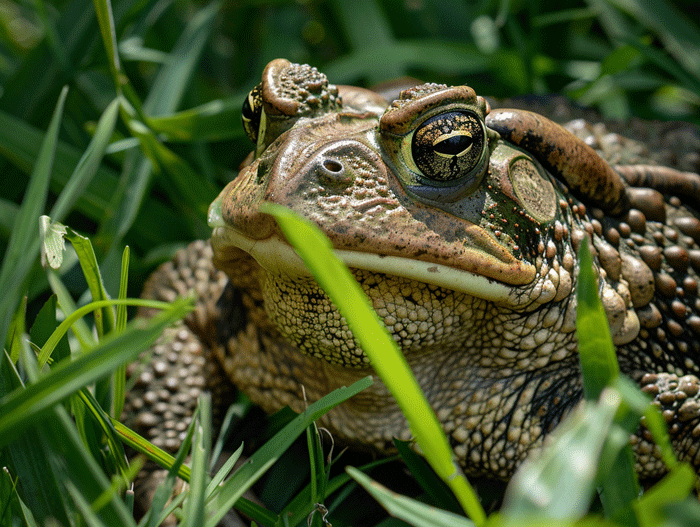Curious about what cane toads eat? These notorious amphibians have quite the appetite. From insects to small mammals, they are voracious predators in their environment.
You might be surprised to learn about the diverse diet of cane toads. They are opportunistic feeders, consuming anything from beetles and spiders to even other frogs.
In this text, we’ll investigate into the intriguing area of cane toads and explore the various foods that make up their diet. Stay tuned to discover the intriguing eating habits of these amphibious creatures.
Key Takeaways
- Cane toads are opportunistic feeders with a diverse diet that includes insects, small mammals, and even other frogs.
- They play a significant role in the ecosystem by regulating populations of various species through their feeding habits.
- Cane toads exhibit nocturnal hunting behavior, relying on ambush tactics and quick strikes to capture prey.
- Their preferred habitats include tropical regions, moist areas, and human-altered landscapes.
- Cane toads have an omnivorous diet, consuming insects, small vertebrates, and even pet food left outdoors.
- Understanding the feeding strategies of cane toads provides insights into how they sustain their energetic lifestyles.
Overview

Cane toads are opportunistic feeders, consuming a diverse range of prey in their diet. These amphibious creatures possess a voracious appetite and are known to feed on various organisms. Here, we investigate into the intriguing eating habits of cane toads to shed light on what makes up their diet.
- Insects: Cane toads are known for their inclination towards insects, including beetles and spiders. These make up a significant portion of their diet as they forage for food in their environment.
- Small mammals: Surprisingly, cane toads also consume small mammals as part of their diet. From mice to small frogs, these creatures are not hesitant to prey on a diverse range of organisms.
- Other frogs: A notable aspect of cane toads’ diet is their consumption of other frogs. This behavior, while intriguing, showcases their opportunistic nature in seeking out food.
By understanding the dietary habits of cane toads, we can grasp the complexities of their ecosystem interactions and the role they play in the environment.
Diet of Cane Toads

Natural Diet
Cane toads have a varied diet that includes a wide range of prey. These opportunistic feeders primarily consume insects such as beetles and spiders. Also, they prey on small mammals like mice and frogs, and shockingly, they may even consume other frogs—showing their adaptability in search of food sources.
Impact on Ecosystem
The feeding habits of cane toads can have a notable influence on the ecosystem. By consuming a variety of prey, including insects and small mammals, they play a role in regulating the populations of these species. But, their presence can also lead to negative implications, especially for native amphibians due to competition and predation.
Prey Items
Here are some key prey items that cane toads commonly consume:
- Insects: Beetles, spiders
- Small mammals: Mice, frogs
- Other frogs
Remember, as opportunistic feeders, cane toads play a significant role in their environment by interacting with various species in their quest for sustenance.
Feeding Behavior

Hunting Strategies
Cane toads are nocturnal hunters, leveraging the cover of darkness to seek out their prey unnoticed. With their lightning-fast tongues, they snatch insects and small animals in the blink of an eye. Their hunting approach is sit-and-wait, relying on patience and sudden strikes to capture unsuspecting creatures.
Feeding Frequency
These voracious eaters have a high feeding rate, consuming a range of prey items daily. With a metabolic rate that demands constant sustenance, cane toads exhibit a regular feeding pattern to meet their energy needs effectively. From insects to small mammals, they feast frequently to sustain their active lifestyle.
In the ongoing article, let’s investigate into the dietary habits of cane toads through the specific lens of their feeding behavior. This section uncovers their hunting strategies and sheds light on how often these amphibians fuel their bodies with various prey.
Habitat and Feeding Habits

Preferred Environments
Cane toads are highly adaptable amphibians that thrive in a variety of environments. Here are some preferred habitats for cane toads:
- Tropical Regions: Cane toads prefer warm, tropical climates.
- Moist Areas: They are commonly found near water sources like ponds, streams, and wetlands.
- Grassy Habitats: Cane toads inhabit grassy areas such as fields and meadows.
- Human-Altered Landscapes: They can be seen in gardens, agricultural areas, and urban spaces.
Dietary Preferences
Cane toads have a broad diet, feeding on a wide range of prey items. Here are some key aspects of their feeding habits:
- Insects: Cane toads primarily feed on insects like beetles, ants, and crickets.
- Small Vertebrates: They also consume small vertebrates such as lizards, frogs, and small mammals.
- Pet Food: Cane toads are known to scavenge on pet food left outdoors.
- Omnivorous: These amphibians have an omnivorous diet, including fruits and plant matter.

Feeding Strategies
Cane toads exhibit unique feeding strategies to capture their prey efficiently. Here are some notable feeding behaviors:
- Nocturnal Feeders: They are primarily active at night, using their excellent night vision to hunt.
- Ambush Predators: Cane toads employ ambush tactics, waiting patiently for prey to approach.
- Quick Strikes: Their lightning-fast tongues can extend rapidly to catch prey within seconds.
Continue exploring the fascinating feeding habits of cane toads to gain further insights into how these amphibians sustain their energetic lifestyles.
Conclusion
Understanding the feeding habits of cane toads sheds light on their remarkable adaptability and survival strategies. From devouring insects to seizing small vertebrates, these omnivorous creatures demonstrate a diverse palate. Their nocturnal foraging and lightning-fast strikes reveal a cunning approach to securing sustenance. By exploring the dietary preferences and hunting techniques of cane toads, you gain insight into their efficient means of thriving in diverse ecosystems.

Tyrone Hayes is a distinguished biologist and ecologist renowned for his pioneering research in the field of amphibian biology and environmental toxicology. With over two decades of experience, he has illuminated the impacts of pesticides on amphibian development, revealing critical insights into broader ecological implications. Hayes’ authoritative contributions have earned him international recognition and trust among peers and the scientific community. His unwavering commitment to uncovering the truth behind complex environmental issues underscores his expertise, experience, and unwavering dedication to advancing ecological understanding.
